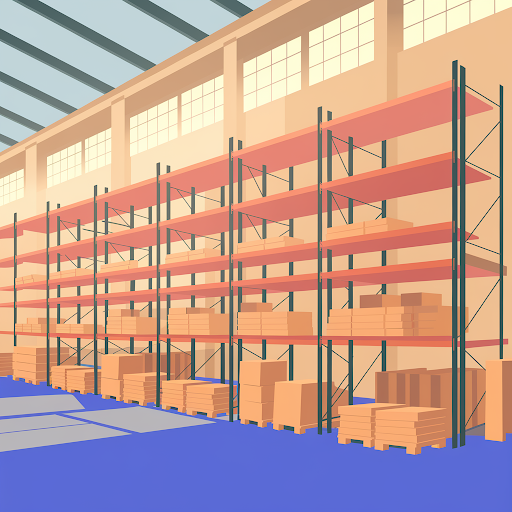Bottlenecks cost time, money, and patience. Suddenly, essential materials are missing, machines sit idle, or teams are stretched too thin. The result? Production stoppages, delayed deliveries, and unhappy customers. Poor bottleneck management can disrupt your entire operation—and cost you valuable market opportunities.
So how can you spot bottlenecks early and avoid them altogether? In this article, we’ll explore why professional bottleneck management is crucial and which strategies help you prevent resource shortages before they become a problem.

Why Bottleneck Management Matters?
Bottlenecks aren’t just annoying—they can seriously hurt your business. Disrupted supply chains, delayed orders, and overworked teams lead to more than frustration. They can cause:
- • Production stoppages: Missing raw materials or machine failures can grind operations to a halt.
- • Customer loss: Delays often result in dissatisfied customers turning to competitors.
- • High additional costs: Emergency orders, overtime, and last-minute solutions can skyrocket expenses.
Effective bottleneck management minimizes these risks and makes your company more resilient to unexpected disruptions.

Typical Causes of Bottlenecks
Bottlenecks rarely happen overnight—they’re often the result of poor planning, sudden disruptions, or inefficient processes. Whether it’s a material shortage, lack of skilled workers, or a production delay, the impact is costly.

So what are the most common triggers for bottlenecks? Here’s a closer look at the root causes and why structured bottleneck management is essential to catch issues early and take action:
-
• Lack of planning transparency:
Without clear insight into resources, production capacity, and supply chains, problems often go unnoticed until it’s too late.
-
• Poor workforce planning:
Shortage of skilled staff or poorly distributed shifts can slow operations and reduce quality.
-
• Ineffective inventory management:
Keeping stock levels too low saves money—but increases the risk of material shortages at critical times.
-
• Inflexible processes:
Companies that can’t quickly respond to changing market demands often experience production or distribution bottlenecks.

5 Strategies to Avoid Bottlenecks in Your Business
Bottlenecks can be avoided with proactive planning. Here are five proven methods to spot and manage them early:
-
1. Plan Ahead with Real-Time Data
Most bottlenecks occur because companies don’t have a clear picture of their current resources. Modern bottleneck management tools help track real-time data on:
- • Inventory levels and material availability
- • Machine capacity and usage
- • Staff availability and qualifications
- • Delivery status and order forecasts
-
2. Optimize Supply Chains and Reduce Dependencies
Material shortages are one of the most common causes of production delays. Companies overly reliant on a single supplier are especially vulnerable.

Here’s how to reduce the risk:
- • Establish alternative suppliers: Diversify your sources to avoid single points of failure.
- • Consider local sourcing: Shorter supply chains mean faster delivery and less risk.
- • Strategically manage stock levels: Smart inventory planning balances cost efficiency with security of supply.
-
3. Prevent Staffing Bottlenecks with Smart Resource Planning
Short-staffing or overworked employees can cause major production delays. Strategic workforce planning ensures enough qualified personnel are always available.
- • Flexible shift planning: Use smart scheduling tools to optimize shifts.
- • Ongoing training: Cross-train your staff to increase flexibility.
- • Dynamic capacity adjustments: Respond to fluctuations early with temp workers or internal reallocation.
-
4. Make Production Processes More Agile
Rigid workflows make it harder to resolve bottlenecks quickly. Build flexibility into your production lines:
- • Modular systems: Easily switch between products when demand shifts.
- • Automation & digitalization: Spot and reduce bottlenecks early.
- • Agile methodologies: Improve cross-department collaboration and speed up decisions.
-
5. Conduct Regular Bottleneck Analyses
Bottleneck management isn’t a one-time task—it requires ongoing analysis and refinement. Make it routine to assess where issues could arise and how to address them.

Ask questions like:
- • Which resources are most vulnerable to shortages?
- • How reliable are our current suppliers?
- • Are our staffing and production plans still effective?
Tip: Run regular bottleneck audits and continuously adapt your planning to evolving market conditions.
- ✅ Use digital tools to gain full transparency
- ✅ Reduce supplier dependencies and diversify sourcing
- ✅ Plan workforce and machine usage proactively
- ✅ Streamline your processes for more flexibility
- ✅ Monitor risks regularly and stay adaptable
Tip: Invest in a digital planning tool (link to homepage) to gain full visibility into your resources. This lets you identify potential bottlenecks before they disrupt your workflow.
Tip: Use planning tools that leverage historical data to predict staff shortages and recommend optimal resource distribution.

Gain a Competitive Edge with Smart Bottleneck Management
Many companies struggle with resource shortages—but with thoughtful planning, these challenges can be avoided. Efficient bottleneck management helps you stay ahead by spotting risks early, preventing costly disruptions, and optimizing your operations.
Future-proof your business with smart bottleneck management!


